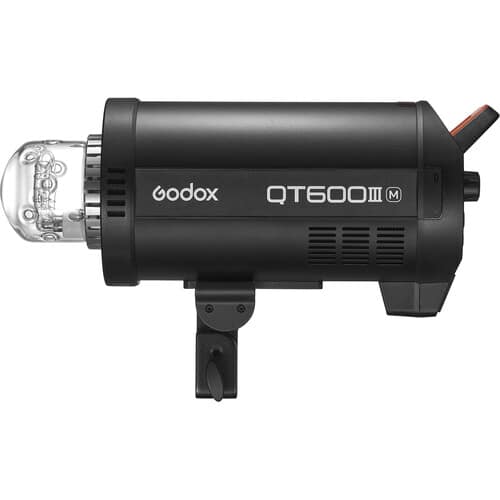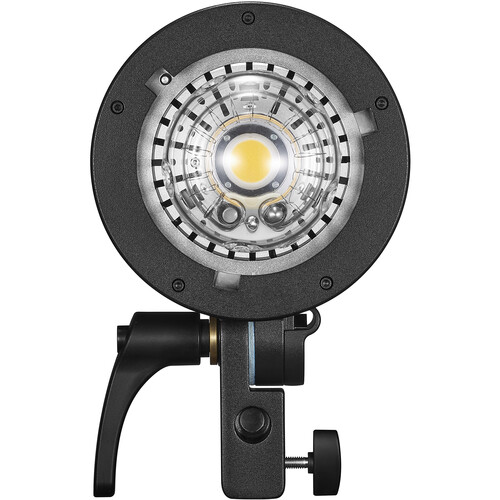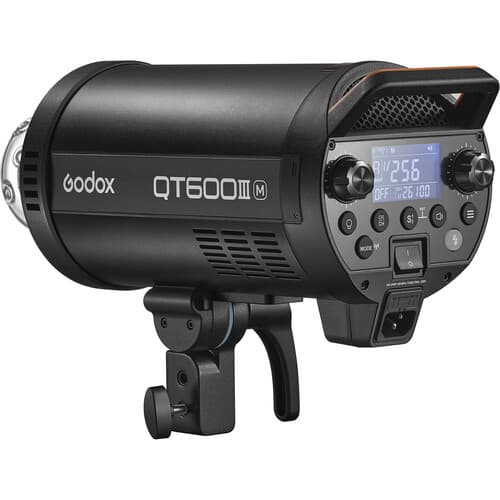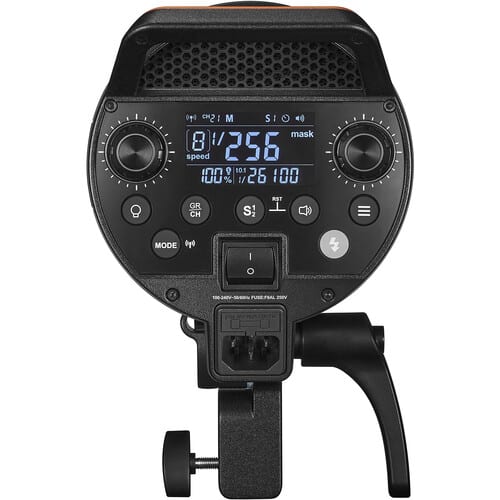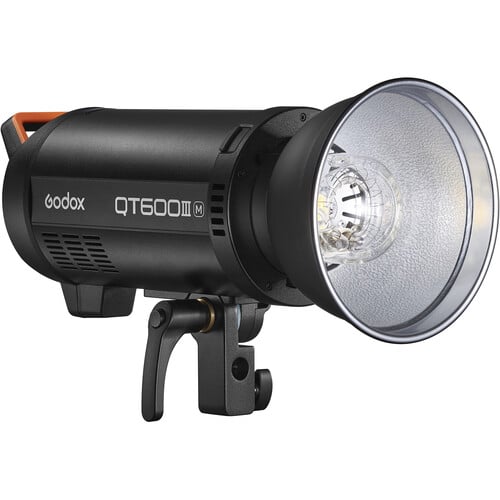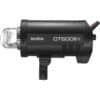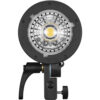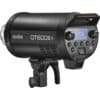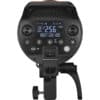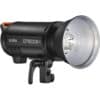Subtotal: ₹18,999.00
Godox QT600IIIM Flash Head
Out of stock
- 600 Ws, 5600K Color Temperature
- 0.01-0.9 sec Recycling
- Flash Duration HSS: 1/26,100 sec
- Built-In Wireless X System
₹43,000.00 ₹50,490.00
Best Buy ₹42,140.00
Free Shipping across India
Have a question? Ask Us Chat | Email | Call
Out of stock
Built for speed, the QT600IIIM Flash Head from Godox is a 5600K daylight-balanced flash source with sophisticated features and advanced technology. The head features 0.01-0.9 sec recycling with flash durations as short as 1/26,100 sec. The QT600IIIM offers power that’s variable from 1/256 to full power, while the 40W LED modeling light’s output is variable as well. Settings are accessed via rear panel push buttons and displayed on the easy-to-read LCD screen. The head has several flash modes for performance options. Ideal for most shooting situations, Stable Color Temperature mode prioritizes precise 5600K color rendition. High-Speed mode favors short flash durations for ultra-sharp capture of peak action in sports or for creative studio work like freezing splashes or water droplets. The QT600IIIM also supports High-Speed Sync enabling the use of shutter speeds as short as 1/8000 sec allowing you to use wider apertures and other creative effects.
The QT600IIIM has built-in 2.4 GHz 32-channel wireless X technology. Using an optional X1, X2, or XPro transmitter, you can control selection of HSS and High-Speed modes, modeling light modes, remote triggering, and more at distances up to 164′. The head also has S1/S2 slave triggering that makes it easy to work cameras that employ pre-flash. Additionally, the QT600IIIM has a Bowens front accessory mount, allowing it to use Godox modifiers as well as accessories from the many manufacturers that use this system.
- Stable Color Temperature Mode maintains color temperature at 5600K (+/-200K), an ideal choice for standard photography
- High-Speed Flash Mode favors short flash durations over color fidelity which ranges from 5400 to 9500K
- High-Speed Sync Mode allows you to shoot at sync speeds as short as 1/8000 sec for wide aperture use or creative effects
- Multi-flash Mode lets you create images of movement such as a golf club swinging by combining a succession of actions into one simple photo
- Mode and multi-function buttons
- Easily read LCD screen displays settings and functions
| Weight | 002.96 kg |
|---|---|
| Brands | Godox |
| Maximum Power | 600 Ws |
| Guide Number | 249.3′ / 76 m at ISO100 with Reflector |
| Flash Duration | t.1: 1/26,100 to 1/530 Sec |
| Recycle Time | 0.01 to 0.9 Sec |
| Burst Rate | 20 fps |
| Color Temperature | 5600K +/- 200K |
| Flash Ready Indicator | Audio |
| Accessory Fitting Type | Bowens S Type |
| Type | LED |
| Wattage | 40 W |
| Sync Type | Button, Radio |
| Built-In Wireless Receiver | Yes |
| Sync Speed | 1/1/8000 Sec (High-Speed) |
| Wireless Frequency Bands | 2.4 GHz |
| Wireless Channels / Groups | 32 / 16 |
| Wireless Range | 164′ / 50 m (Radio) |
| Delay Range | 0.01 to 30 Sec |
| Display | LCD |
| Mount | 5/8″ / 16 mm Receptacle |
| Fan Cooled | Yes |
| Dimensions | H: 6.9 x W: 5.6 x L: 15.4″ / H: 17.6 x W: 14.3 x L: 39.2 cm |
| Weight | 7.34 lb / 3.33 kg |
| Package Weight | 10.2 lb |
| Box Dimensions (LxWxH) | 16.4 x 8.9 x 8″ |
Shipping Policy
- Free Shipping
- No shipping charges throughout India.
- We deliver throughout India, Monday-Saturdays, excluding India Public holidays.
- We would dispatch the order in 1-2 working days and it should reach to you in minimum 4 days and maximum in 8 working days
- If there is any delay or if the customer has any quarries relating to shipment they can reach to us on 9356372991.

 Godox MF12-K2 12W Macro Flash, Compatible with Nikon, Sony, Canon, Fuji, Olympus and Panasonic.
Godox MF12-K2 12W Macro Flash, Compatible with Nikon, Sony, Canon, Fuji, Olympus and Panasonic. 